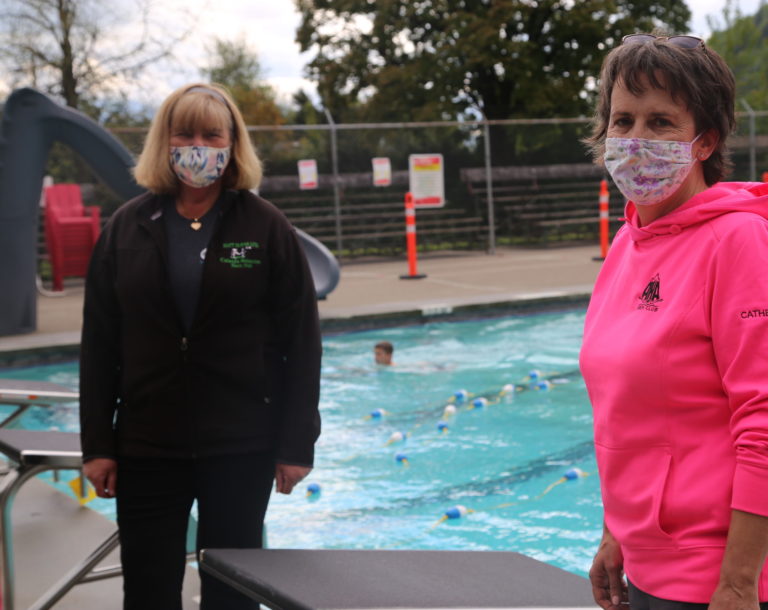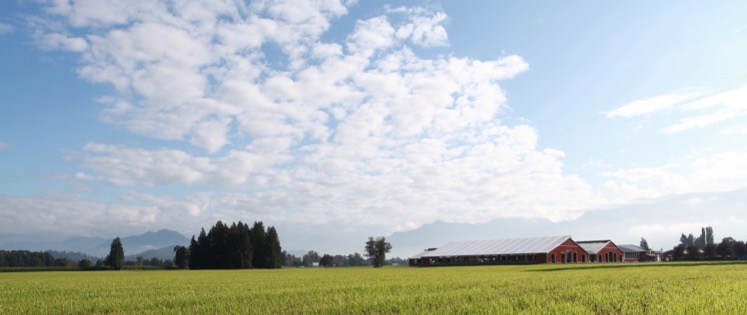Robotic milking machines are becoming increasingly popular in the dairy industry. How do they work and what are the benefits of going high-tech for cows and farmers?
Robots and…dairy farms? If you are scratching your head wondering how these two things relate, you aren’t alone! Time to shake up that image of Old MacDonald’s farm and meet the newest advancements to keep cows comfortable and healthy.
Milking robots: it’s all about keeping cows comfortable!
A farmer’s top priority is caring for his or her cows. BC dairy farmers spend most of their days in the barn, working hard to maintain the comfort and health of their herd. After all, healthy cows make the high-quality milk we enjoy!
Dairy farmers pay attention to new technology—especially tools that promote cow comfort. (You heard it here first: farmers are techies!) When it comes to milking, traditionally, cows are milked in a parlour twice or three times a day. Milking parlours give farmers a chance to examine their cows’ health up close. Farmers carefully check a variety of indicators, including milk quality, hoof condition and even the temperature of their cows’ ears (fact: if a cow is unwell, her ears will feel cold).
However, some farmers in BC are replacing their milking parlours with a special robot—one that can milk cows, while performing health check ups in a comfortable environment.
How do milking robots work?
Cows enter the milking unit freely, according to their individual milking time preferences. The robot operates using sensors that detect the teats of each cow’s udder, and each teat is cleaned and dried by the robot before the milking begins. Cows then exit the unit once milking (five to seven minutes, typically) is complete. Equipment is sanitized in between each cow so that no milk residue is left behind.
What are the benefits of milking with robots?
Cows Make Their Own Schedule
That’s right –they choose when they want to be milked! Robotic milking systems give cows the opportunity to travel at their own pace to get milked. Cows are social herd animals; they prefer to stay in groups. Robot units have an open design so that cows can readily see their herd mates, which creates a comfortable environment during milking.
Most robotic milking systems have a feeding system integrated into the unit, which allows cows to enjoy a tasty treat while being milked. This acts as an incentive for the cow to enter the unit and puts her at ease during milking. Some robots contain feed dishes that retract when the milking is complete and entice the cow to exit the unit.
Close Monitoring of Cow Health
Remember how farmers perform health checks in a dairy parlour? Robots can perform many of the same tasks! As soon as a cow begins milking in a robot unit, sensors pick up a variety of milk quality indicators. This information is sent to the farmer’s computer as a report, so he or she can check up on cows that present abnormalities (e.g., a drop in milk volume). This innovative system can warn farmers of any health issues even before visual symptoms appear.
All dairy farmers keep a close eye on their herd health. Identifying issues very early on enables farmers to be even more proactive in ensuring the well-being of their cows.
What do farmers do if they aren’t milking cows?
We know what you’re thinking, and no, farmers are not on vacation in Hawaii. While implementing new technology can relieve farmers of time spent in a milking parlour, it gives them more time to monitor their herd and tend to other farm tasks.
With robotic milking systems in place, farmers have access to around-the-clock monitoring on their smartphones, tablets, and computers anywhere they go! These clever bots will let them know exactly what is going on with their herd and alert them of any potential concerns, no matter where they are.
Even if they do go to Hawaii, they can still check up on each and every cow in their herd. How’s that for technology?
References
- DeLaval. (2015). DeLaval VMS TM. DeLaval. Retrieved from: http://www.delaval.com/en/-/Product-Information1/Milking/Systems/Automatic/DeLaval-VMS/
- Herbert, L. (2014). Robotic cow milkers change herd mentality. Rural. Retrieved from: http://www.abc.net.au/news/2014-09-26/robots-change-cow-herds/5772282
- Lely. (n.d). The Lely way of farming; one man, two million. Lely: Innovators in Agriculture. Retrieved from:
- https://www.lely.com/media/filer_public/ec/2e/ec2ee271-dc13-4d86-8951-b1d3167bf3df/lely_vector_lhqb04014ena.pdf
- Truck and Tractor. Lely Astronaut – milking naturally. Nowra Truck and Tractor. Retrieved from: https://truckandtractor.com.au/index.php/milking-robots/515-lely-astronaut
Acknowledgements
Thank you to DeLaval and Lely for providing us with images of their milking system and to the dairy farmers who allowed us to take photos of their robotic milking systems.



